One
OUT OF DETROIT
Long before the village of Pontiac was born, the British, French, and the new Americans clashed over the right to lay claim to the densely forested lake lands of Lower Michigan—the Northwest Territory of the day. The Ottawa, Ojibwa, and Potawatomi peoples had been fishing, hunting, and gathering here for ages. The city was named for a great Ottawa warrior, Pontiac. He was the most celebrated Native American of his time in this part of the country. He had led a Native American uprising against the British in 1763, becoming immortalized. At one time not too long ago, Chief Pontiac’s picture hung in every public school here.
After the War of 1812, the United States sought to expand into the Michigan Territory. Out of Detroit came a group of settlers named the Pontiac Company. Fifteen men and families, who bought eight quarter-sections of land located 25 miles northwest of Detroit, formed the new venture. Solomon Sibley, Detroit’s first mayor and a war veteran, was chairman of a committee that was established to assign these tracts of land. He also formed a partnership with Stephen Mack and Shubael Conant. Mack, Conant, and Sibley helped the Pontiac Company begin a town.
The new village had an enterprising start through many long, tough winters. A sawmill was in operation by the second year, 1820, which is the same year the county seat of Oakland was established in Pontiac. When the Erie Canal opened in 1825, it became much easier for those from the Northeast to come to Pontiac, and they did. Notices were printed in the papers extolling the great resources and landscapes. The population grew rapidly in the following years.
In 1826, Stephen Mack, the agent for the Pontiac Company and the man largely responsible for overseeing all of the town’s early development, died. With Mack gone, Solomon and Sarah Sibley, who had financed all of the first mills and buildings and overseen the early settlement, took over again and helped the village through the end of the decade.
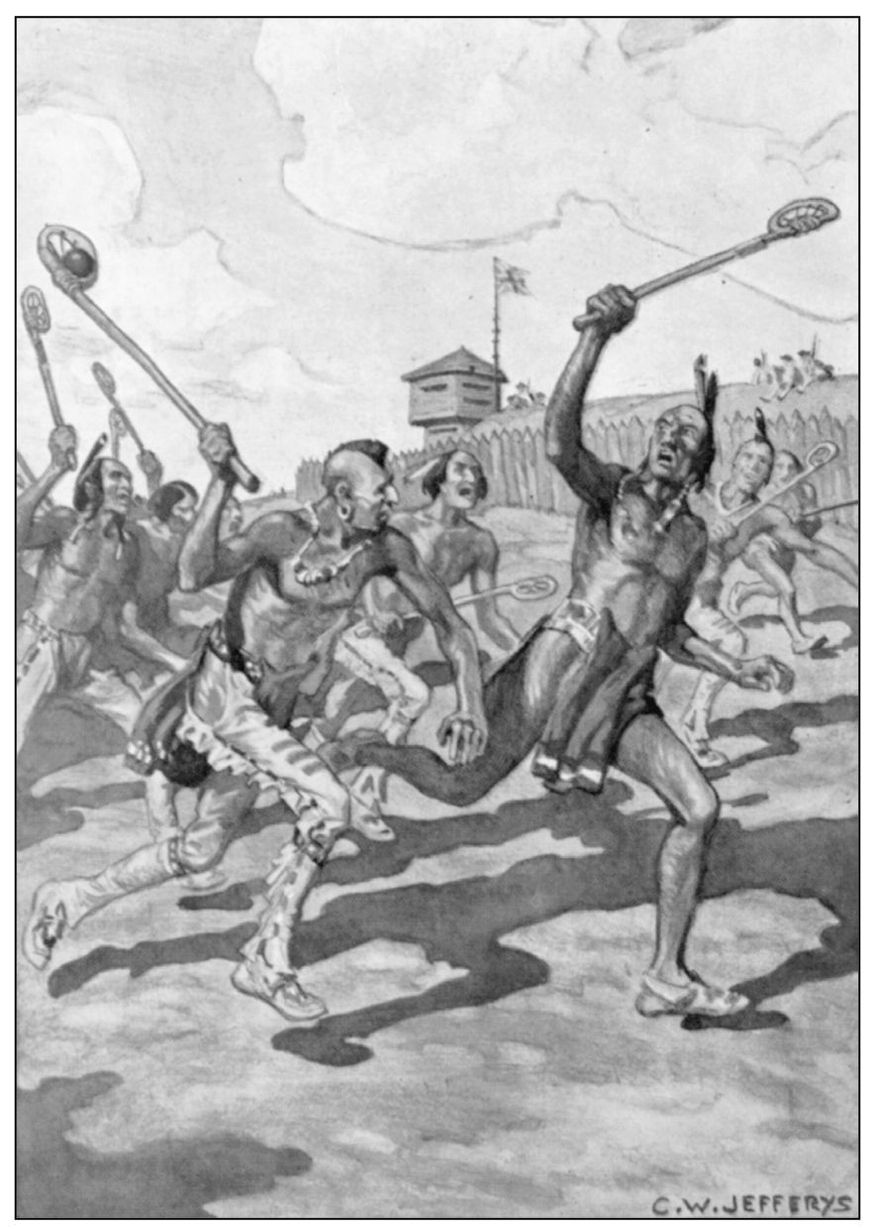
PONTIAC’S LACROSSE GAME IN MAJ. JOHN RICHARDSON’S HISTORICAL NOVEL WACOUSTA. Pontiac, leader of the Ottawa people, conceived a plan to oust the British from the fort at Detroit in 1763. The plan was to play a game of lacrosse outside the fort where the ball would go over the wall. When getting permission to retrieve the lost ball, the warriors would rush the fort once the drawbridge was lowered; however, a Native American woman informant foiled the plan. (Author’s collection.)
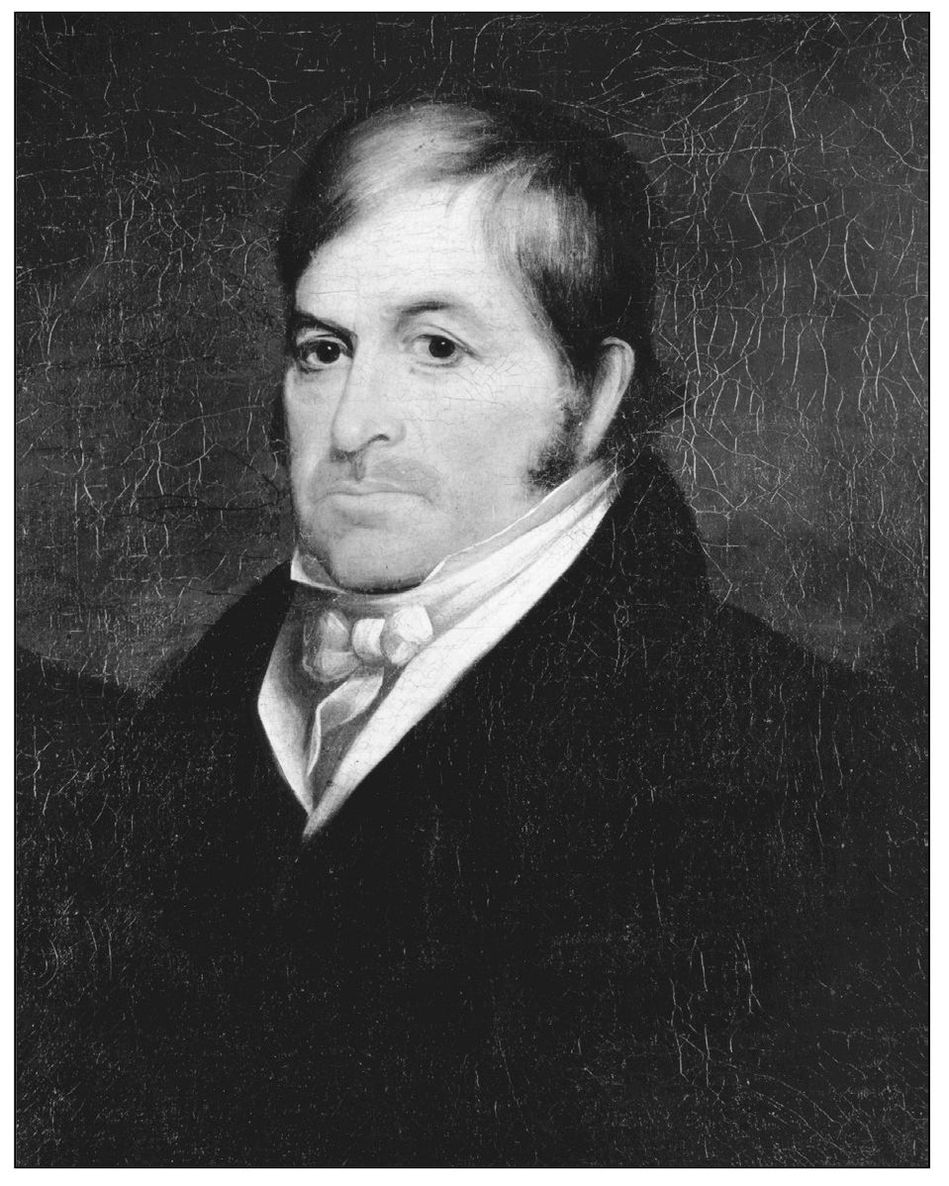
SOLOMON SIBLEY. Sibley came to Detroit in the 1790s. He was one of the first lawyers there and the first mayor in 1806, drafting the city’s first charter. He married Sarah Whipple Sproat Sibley. Together they used their wherewithal to oversee the settlement at Pontiac. They financed the first buildings and mills at Pontiac. According to the Solomon Sibley manuscript file at the Burton Historical Collection of the Detroit Public Library, “There was a wagon in Detroit, the property of Judge Sibley, that was lent to those who needed it.” (Courtesy of Burton Historical Collection, Detroit Public Library.)
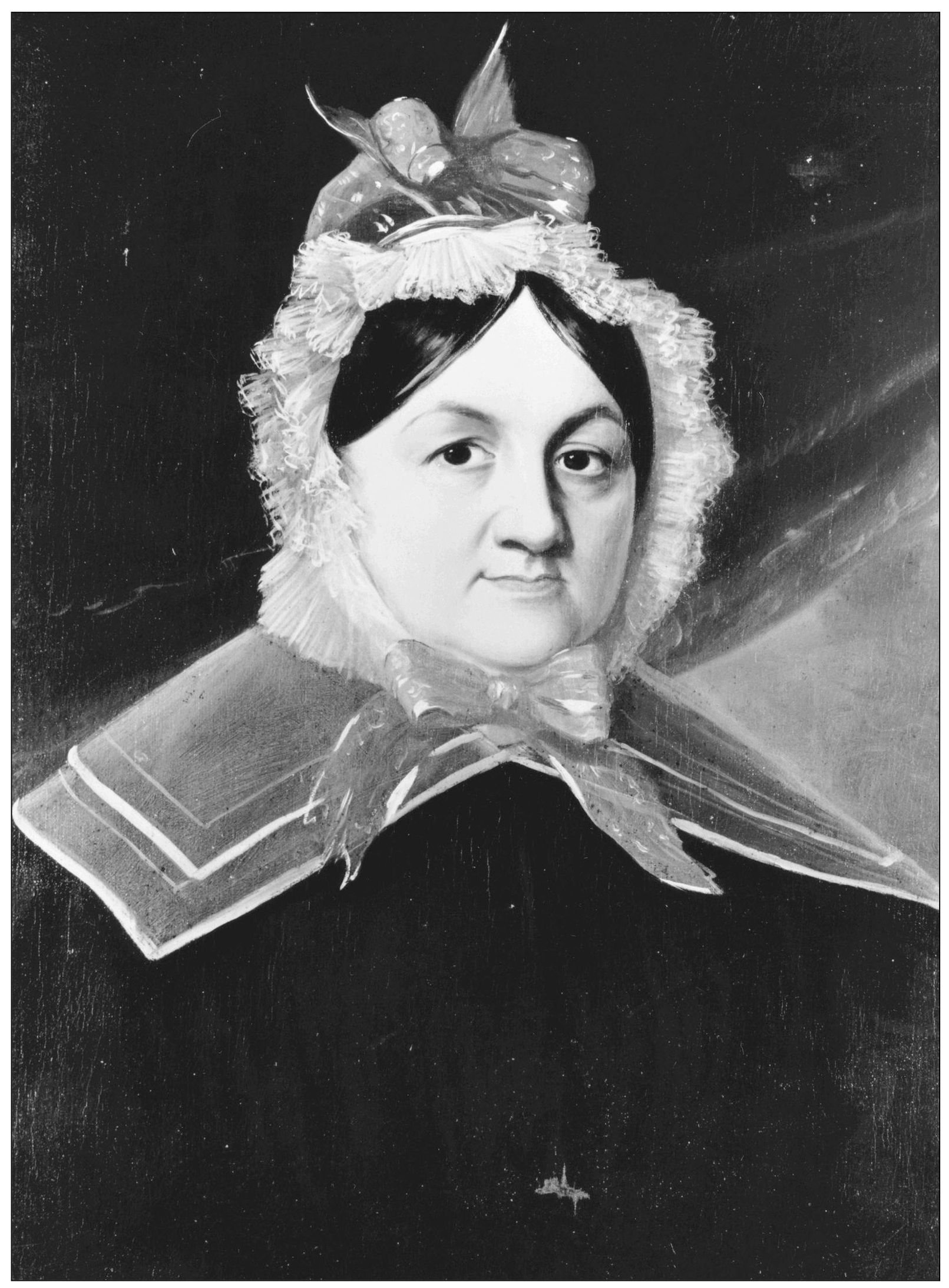
SARAH WHIPPLE SPROAT SIBLEY. Sarah and Solomon had nine children. When Solomon was away in Washington D.C., Sarah stayed in touch with Pontiac settlers to make sure needs were met and that the company of Mack and Sibley had capital. She is credited with having brought the first piano to Detroit. She built a house after her husband’s death in 1846 that still stands on East Jefferson Avenue in Detroit. (Courtesy of Burton Historical Collection, Detroit Public Library.)
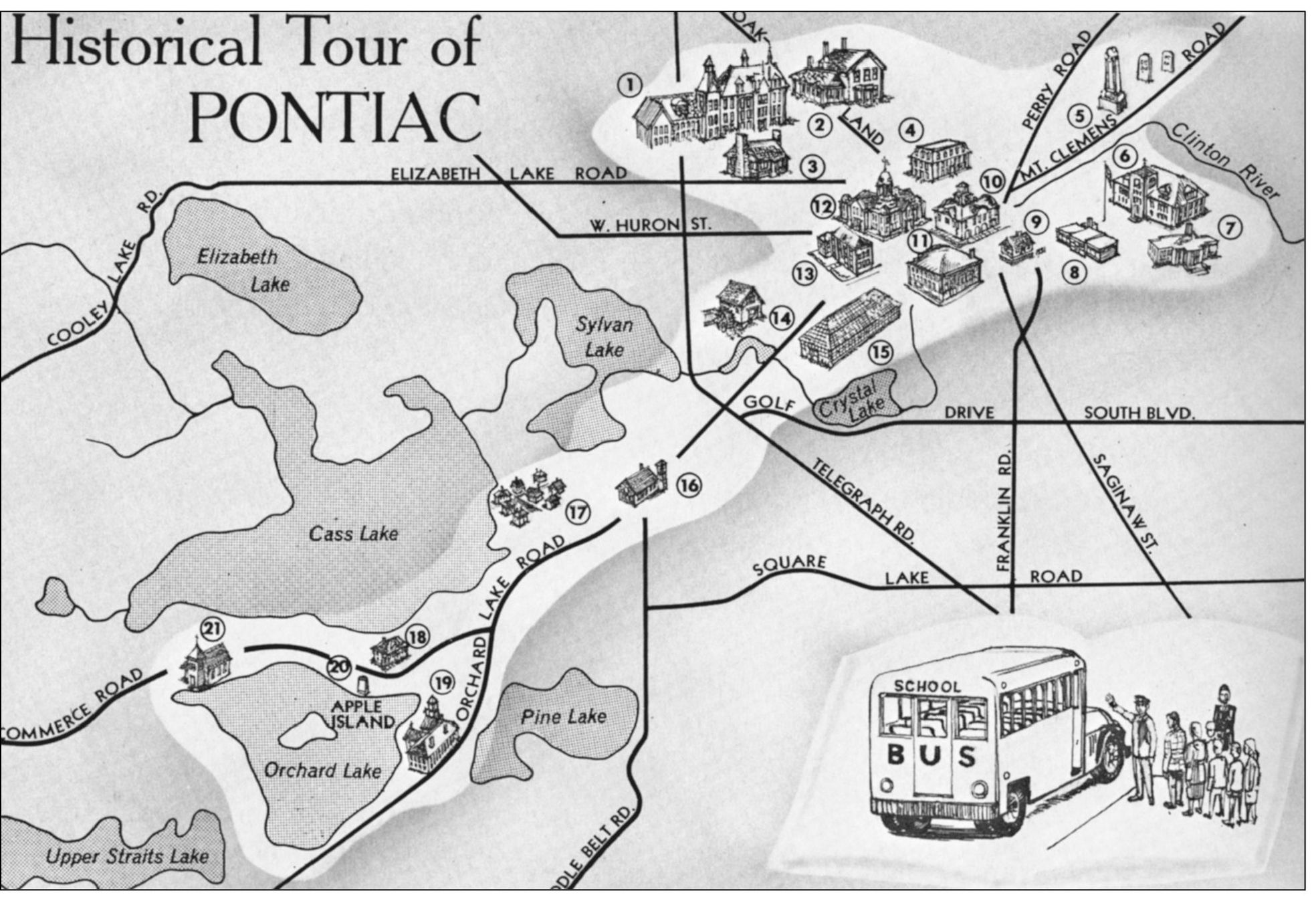
SCHOOL HISTORICAL TOUR OF PONTIAC. A typical tour for a third-grade class in a Pontiac school in the 1960s included the following locations numbered on the map: (1) Pontiac State Hospital, (2) Gov. Moses Wisner home, (3) the log cabin at the state hospital, (4) the Furlong Building, (5) Oak Hill Cemetery, (6) Central Elementary School, (7) Pontiac City Hall, (8) the Safety Building, (9) the site of the first house, (10) Fire Station No. 1, (11) Chapman Hotel (Hodges House), (12) Temple of Justice (county courthouse), (13) Pontiac Central High School, (14) Dawson Millpond, (15) Pearce Floral Company, (16) Whitfield Elementary School, (17) Keego Harbor, (18) David Ward’s home, (19) Saint Mary’s College, (20) the plaque at end of the Native American Trail, and (21) Orchard Lake Community Presbyterian Church. This educational tour visited historic sites in the city limits but also the surrounding lake communities. Whitfield School was in the Pontiac School District but outside the city limits. (Courtesy of Linda Porter.)
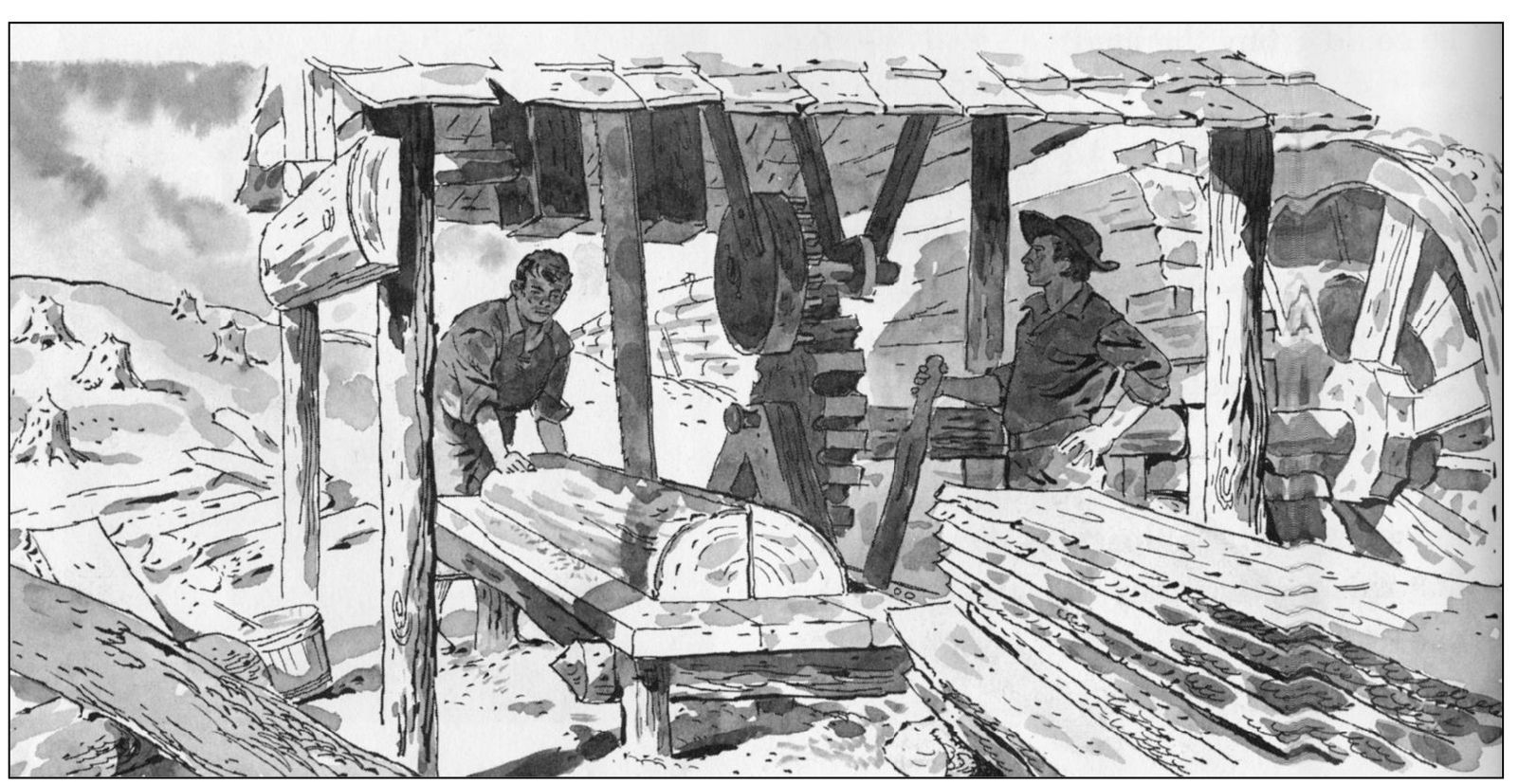
EARLY SAWMILL. Early water-powered sawmills didn’t use a circular blade, as there wasn’t enough power in early mills for that. Early saws used a vertical blade, as shown, to cut logs into boards. Logs were moved by hand through the blade. Pontiac’s first sawmill was up and running as early as 1820, as referenced in a letter from Sarah Sibley to her husband, Solomon. (Courtesy of Linda Porter.)
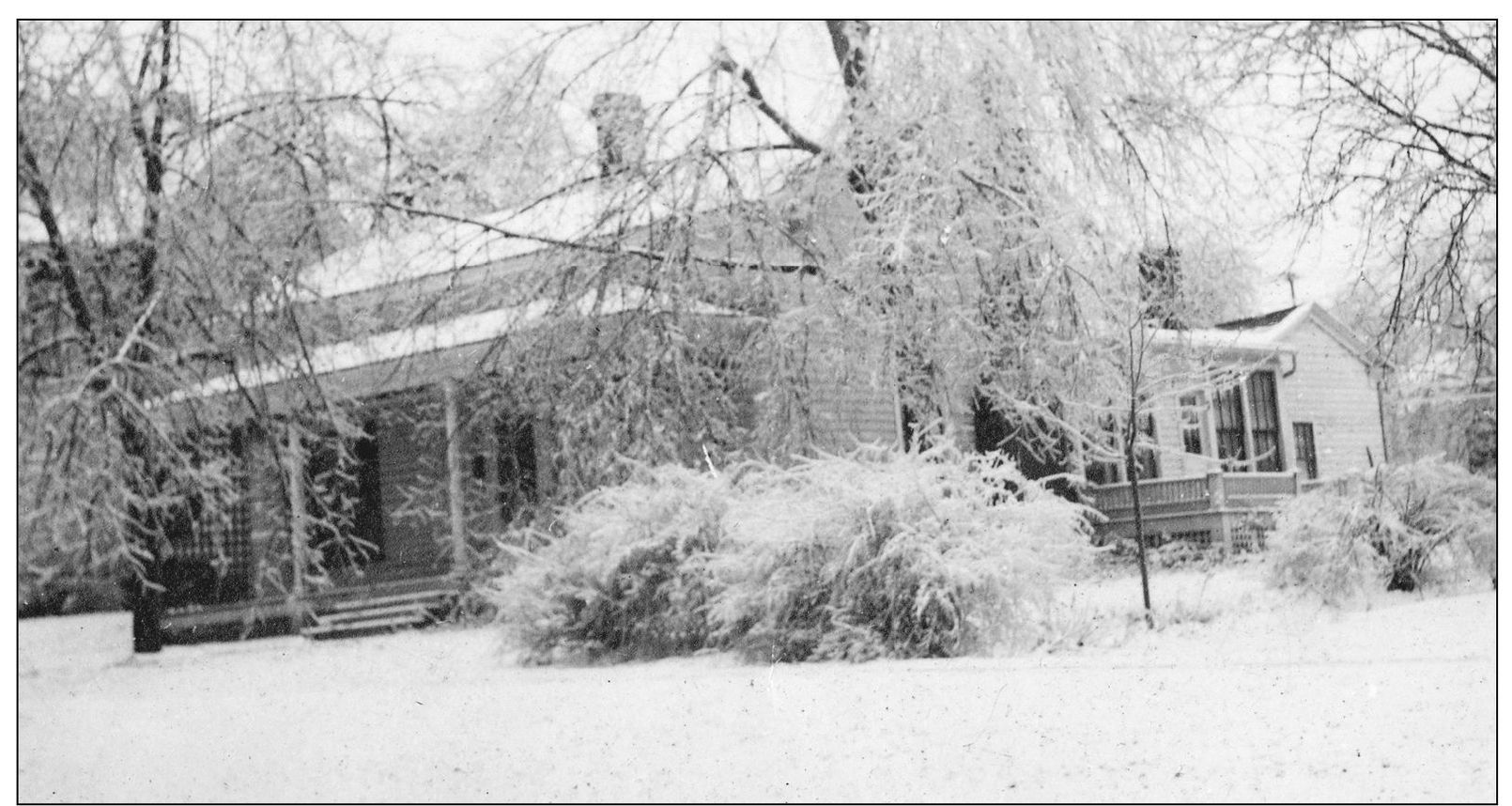
SIBLEY-HOYT HOUSE. There is a cabin in the heart of this house, built by the Sibleys, that was on a 10-acre out lot and part of the original village of Pontiac. They purchased the out lot along with the “mill privilege,” water rights to the Huron River of St. Clair, now the Clinton River. It was one of the first structures in the new village. The first cellar likely belonged to this house. Another house was moved here by the Hoyts and added to the cabin in 1867. (Author’s collection.)
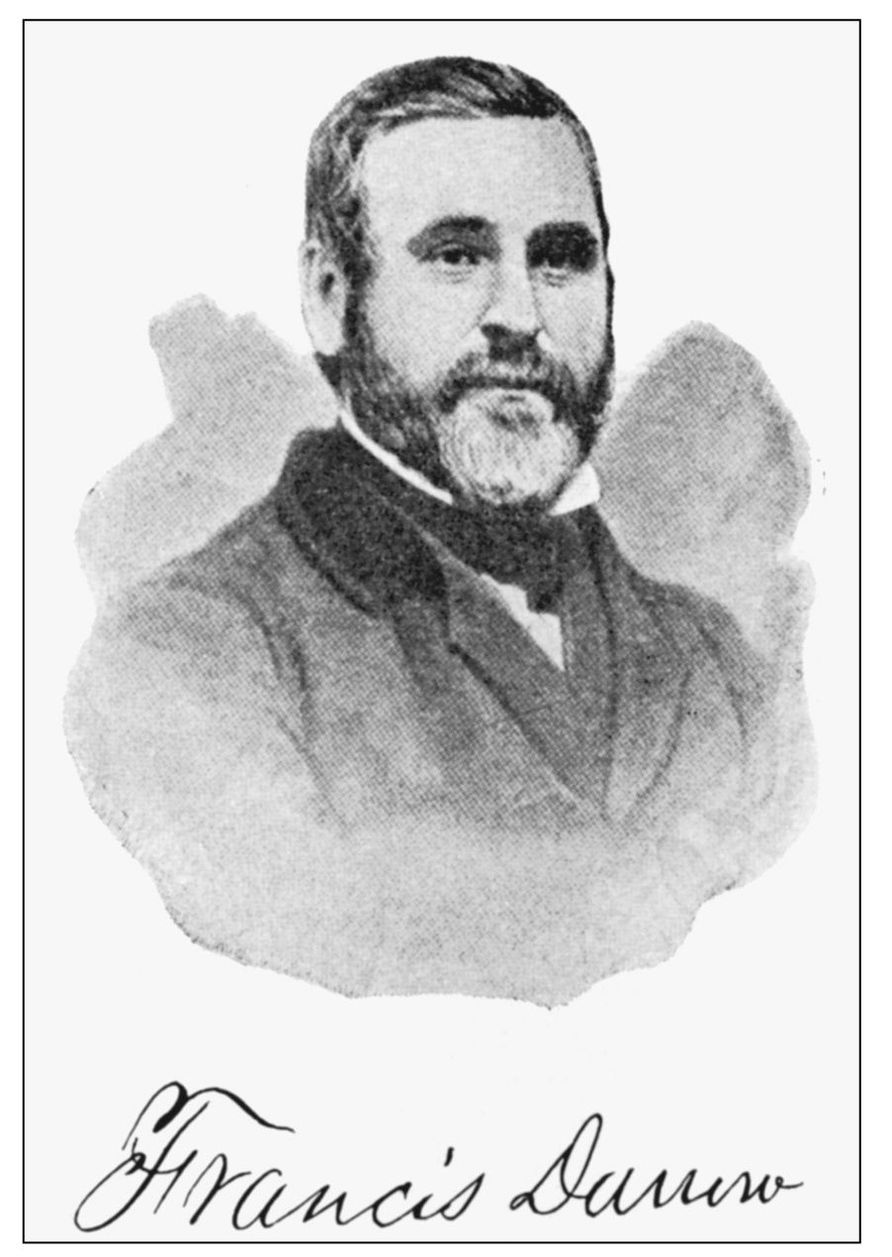
FRANCIS DARROW. Darrow came to Pontiac in 1831. He married Augusta LeRoy, the daughter of Oakland County’s first prosecuting attorney, Daniel LeRoy. Darrow formed a partnership with his brother-in-law, Abel Peck, to erect the first brick building in town and to establish the second subdivision, Darrow and Peck’s Subdivision. Darrow was an ardent abolitionist serving as an officer in Oakland County’s Free Discussion and Anti-Slavery Society in 1836. (Author’s collection.)
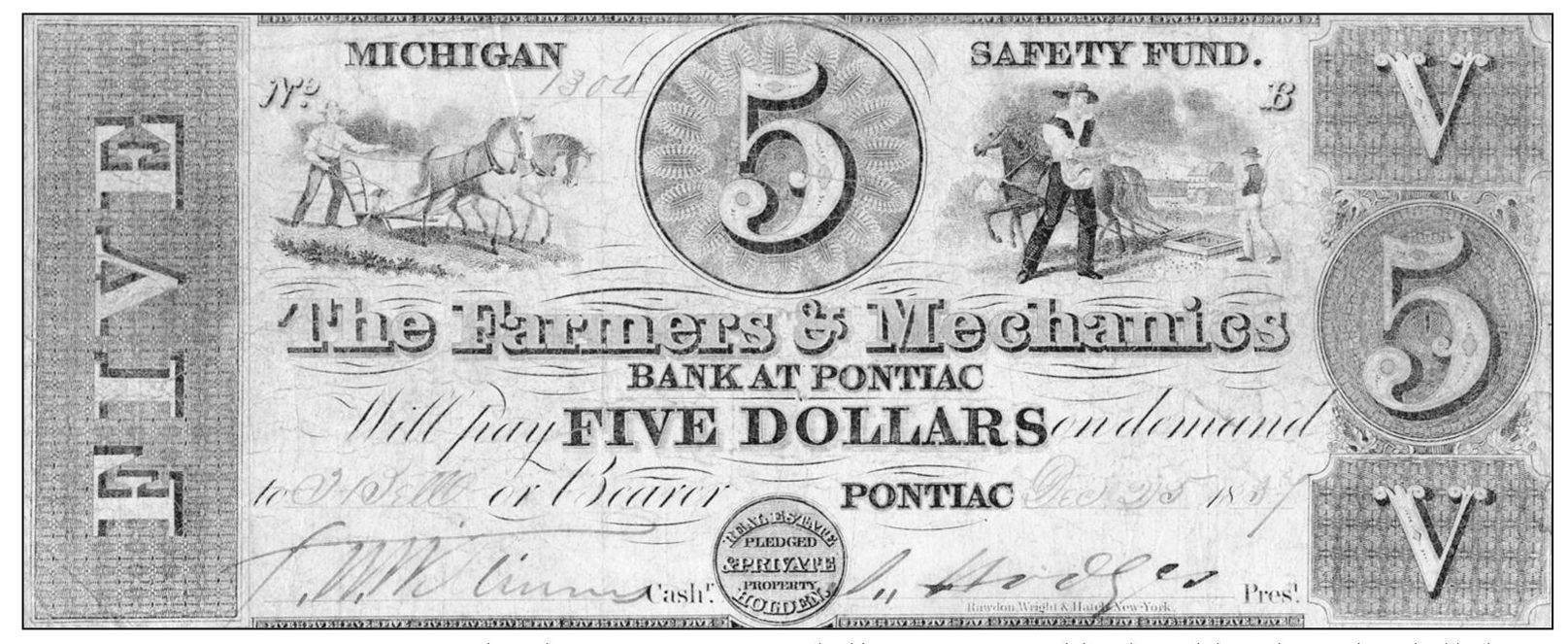
1837 BANK NOTE. Before federal currency, paper bills were issued by local banks. This bill dates to 1837 and was issued by Farmers and Mechanics Bank, one of several wildcat banks that popped up in Pontiac as a result of the recession of the 1830s. President Jackson had called for land sales to be paid for in silver and gold, causing a drain on hard currency. These banks, like Farmers and Mechanics, quickly became insolvent. (Courtesy of Service Glass.)
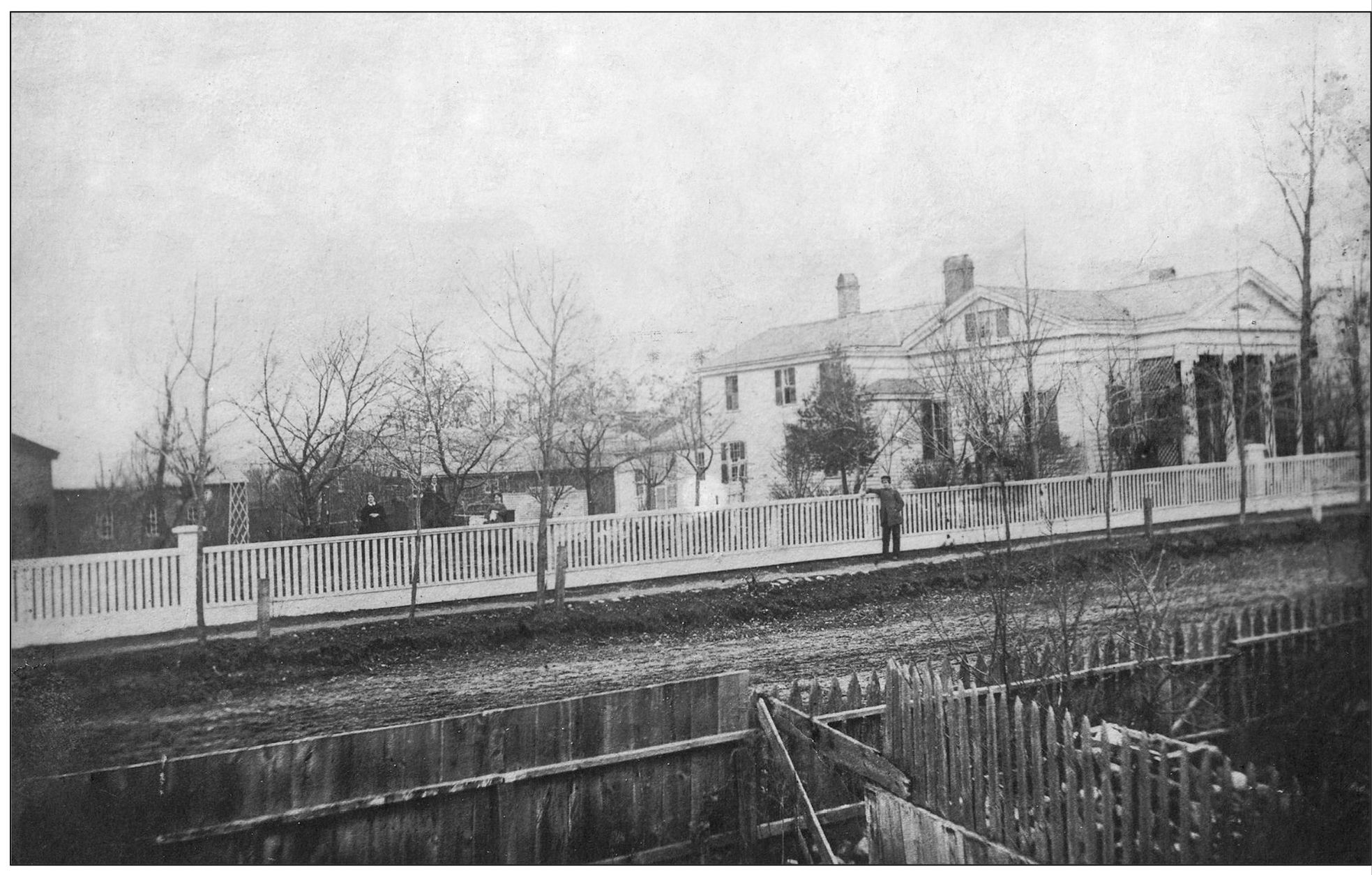
SEELEY HOUSE. This Greek Revival house on West Lawrence Street was probably the first house built in Darrow and Peck’s Subdivision in 1836. Thomas Drake, who was the owner of a sawmill north of Pontiac and the founder of the Pontiac Gazette Newspaper, built the house. Most of the original house was replaced with an auditorium by the First Church of Christ, Scientist in 1921. It is currently the home of Mount Zion Missionary Baptist Church. (Courtesy of OCPHS.)
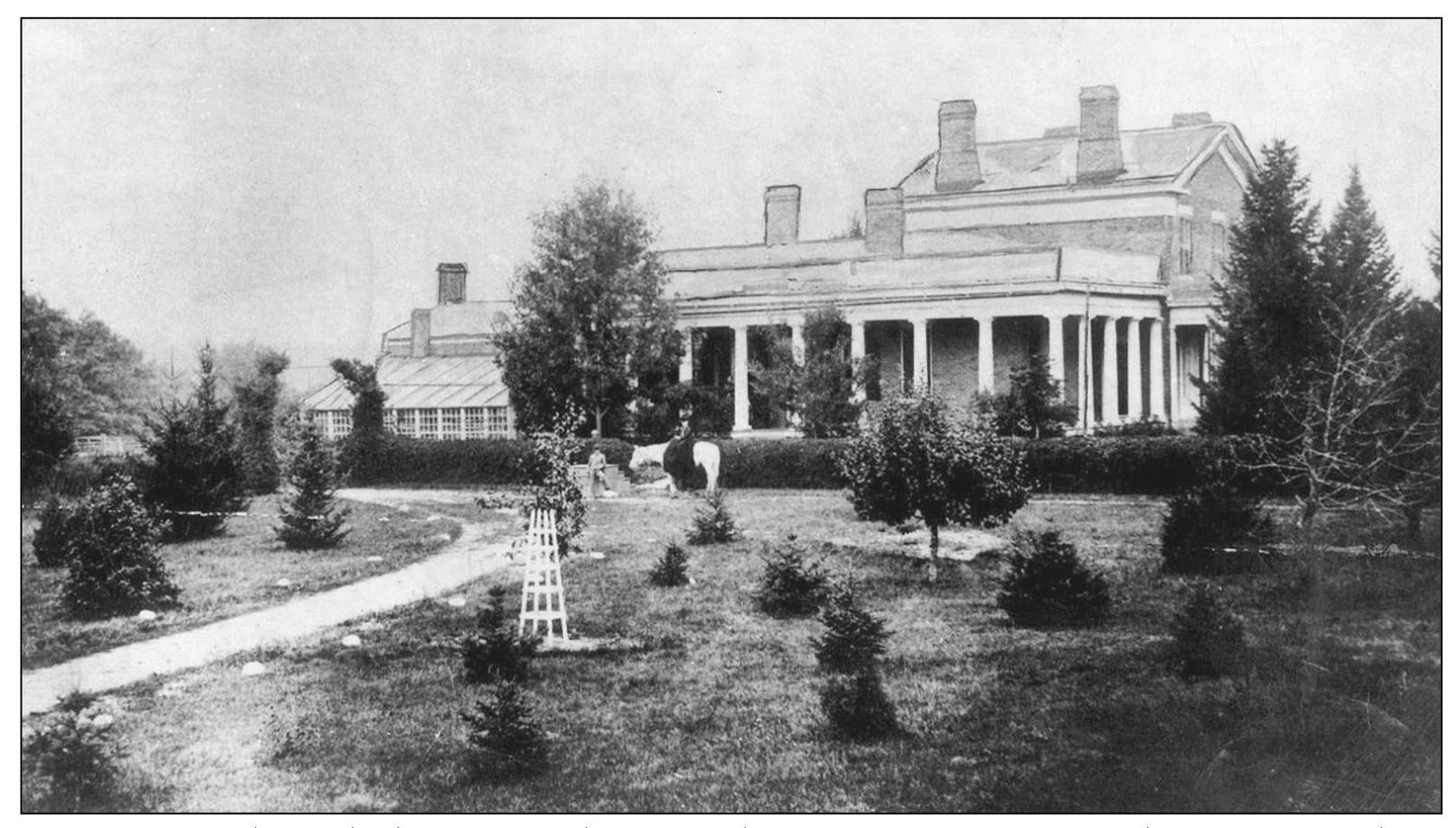
PINE GROVE. This is the home of Michigan’s 12th governor, Moses Wisner, his wife, Angeolina, and their family. The house started as a small brick structure in 1845. The larger facade was added in 1858, when Wisner was elected governor. With no gubernatorial mansion in Lansing, Wisner made changes to accommodate the duties of his newly elected position. It is currently the home of the Oakland County Pioneer and Historical Society. (Courtesy of OCPHS.)
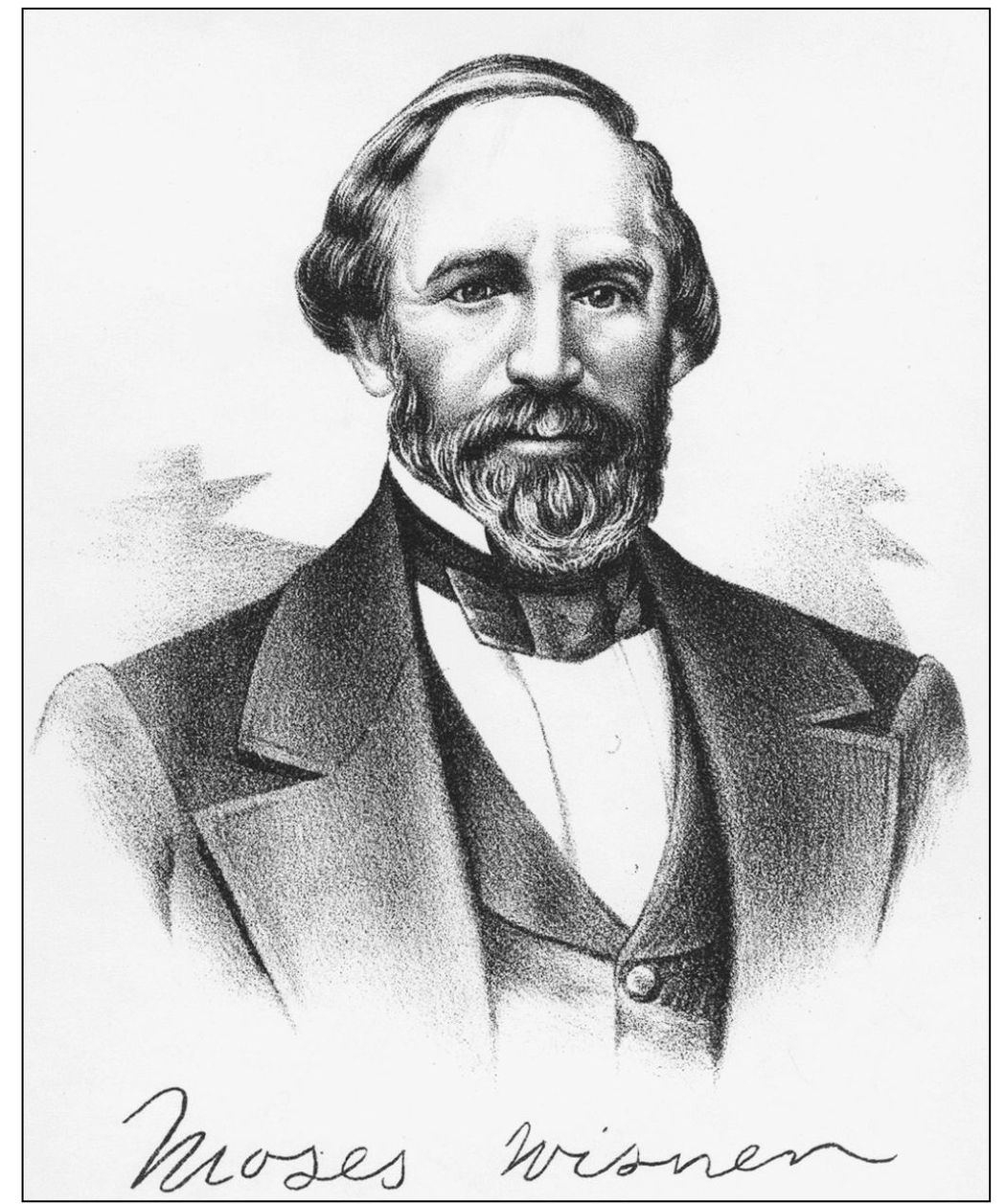
MOSES WISNER. Born in 1815, Wisner came to Pontiac in 1845 and built the family homestead. After his first term as governor (1859–1861), he enlisted in the Union army. As a colonel, he organized the 22nd Michigan Infantry in Pontiac and left Michigan in September 1862. He died on January 5, 1863, of typhoid in Kentucky. Wisner was an attorney by trade but also loved gardening. (Courtesy of OCPHS.)
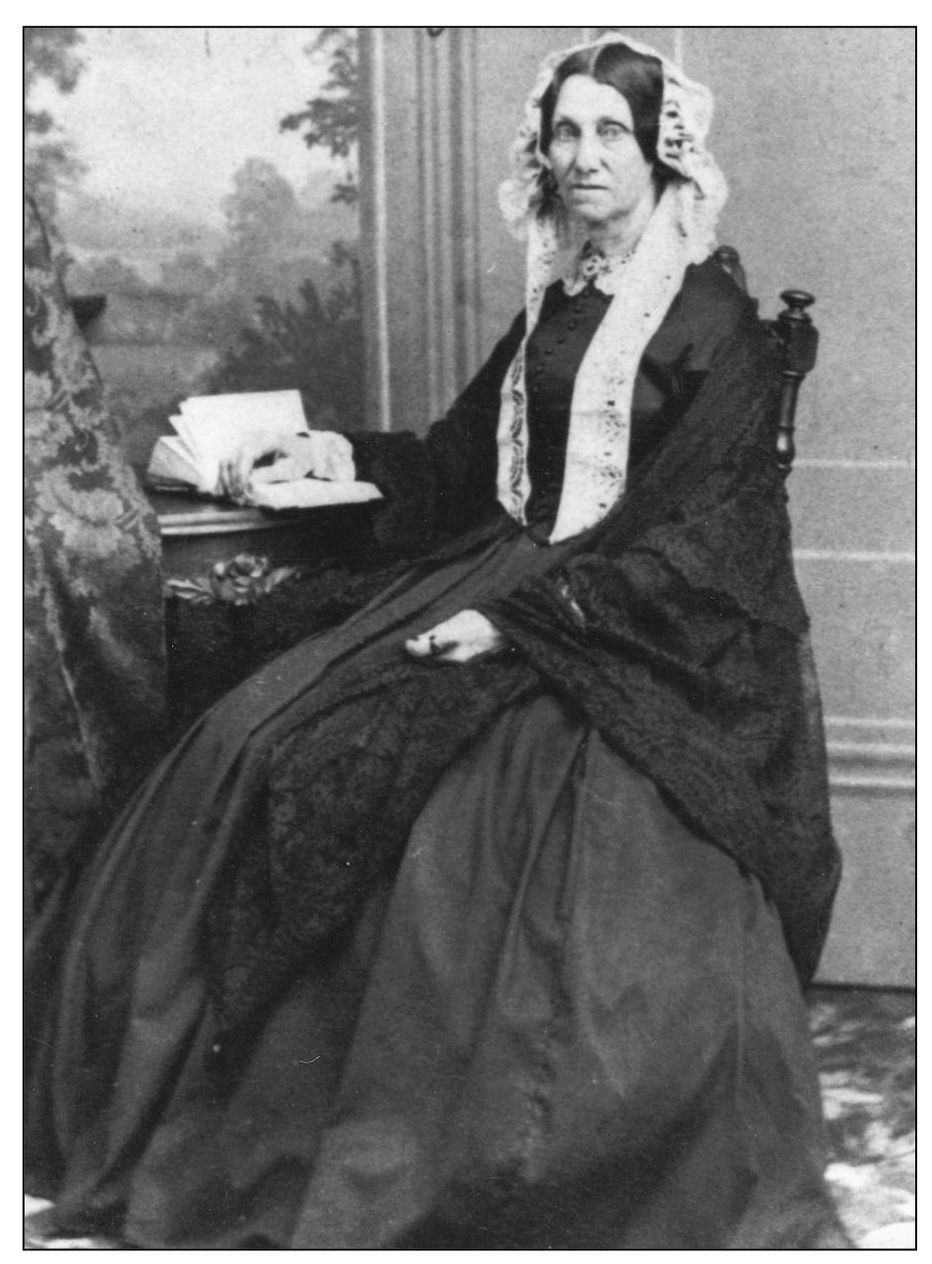
MARY ANNA WILLIAMS HODGES. Daughter of Oliver Williams, Mary Anna married Schuyler Hodges in 1828. Before the age of 16, she walked many miles to take care of the sick and sat up many a night watching over the dying in Pontiac. According to The History of Oakland County 1817–1877, Hodges commented, “Many nights the only sound to break the stillness was the chirping of the August cricket upon the hearth.” (Courtesy of OCPHS.)
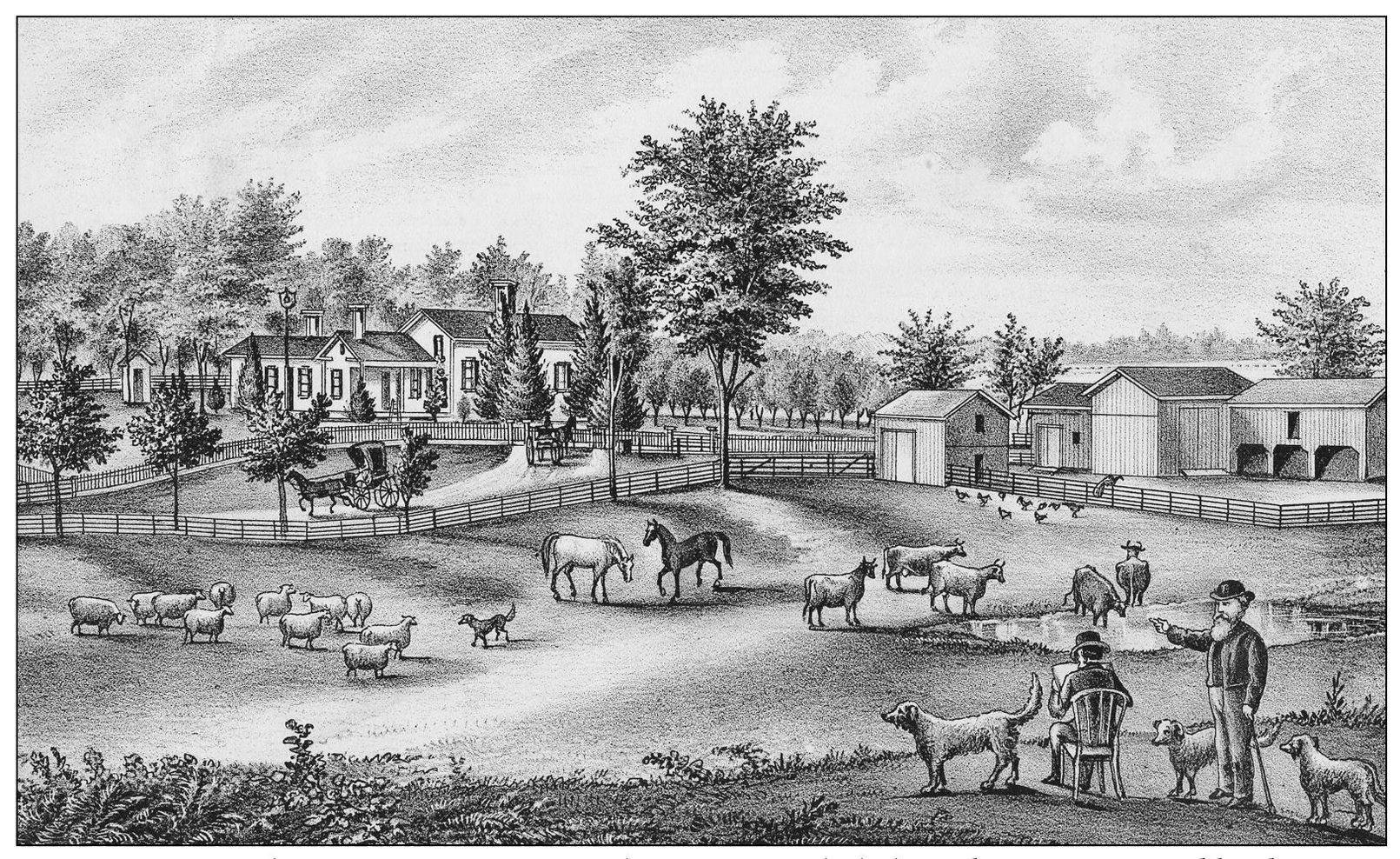
SPENCER FARM. This engraving of a typical farm was included in The History of Oakland County 1817–1877. There are cows, sheep, dogs, horses, an orchard, and farmland. There is a bell high up in front of the house and an outhouse. The slope of the roof indicates it was built in the 1840s or 1850s. (Courtesy of OCPHS.)

MAPLE SUGARING. Buckets are hung on sugar maple trees in March and April at the Sibley-Hoyt House in Pontiac. Pioneers relied on maple syrup in northern climates for a sweetener throughout the year. The process was learned from Native Americans. It takes 32 gallons of sap to produce 1 gallon of syrup. Fine lumber for furniture also comes from sugar or hard maple trees. (Author’s collection.)
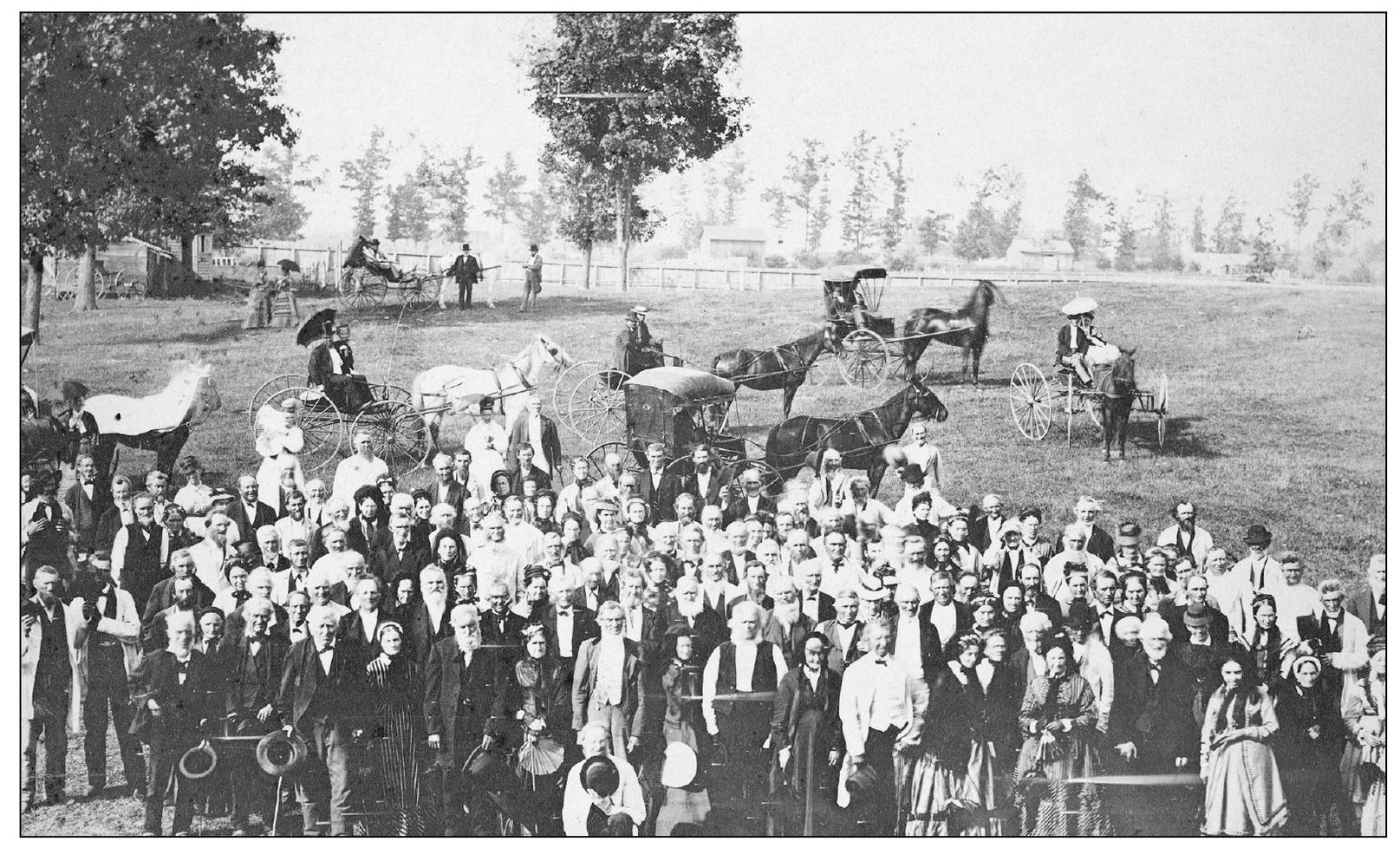
PIONEER’S REUNION. In 1874, those still living who were the first settlers of Pontiac and their families gathered for a reunion to recall old times when Pontiac was a mere path in the wilderness, with few houses and no railroad. By the time of their reunion, Pontiac had progressed to having 18 bridges, 1 being iron and 4 of them crossing Pontiac Creek. (Courtesy of OCPHS.)